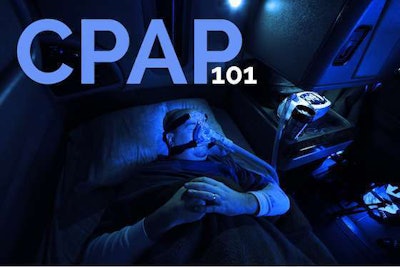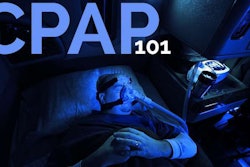


The unfortunate reality is your CPAP device may not immediately be the most comfortable thing you’ve ever worn, but you have options to make it easier to use.
CPAP.com, an online CPAP retailer, advises that new CPAP users wear their mask during the day while they’re doing a regular activity like watching television or reading a book. The theory is that the more you wear the mask during normalactivities, the easier it will be to adjust to wearing it while you sleep.
If your CPAP leaks or doesn’t fit well, you may need a different mask size. If you wake up with a dry nose or feeling congested, you’re not alone. This is a common complaint about CPAPs, according to CPAP.com. Most CPAP machines come with a humidifier to help address that problem by adding moisture to your machine’s air. Another common issue with CPAPs is that they irritate the skin where the mask touches it. There are mask liners and creams available to address this.
You may also have to experiment with different mask types to see which one will work best for you.
Terry Batchelor, a company driver from Gillette, Wyoming, started off with a nose mask but because his CPAP’s pressure is set to the highest possible level, it would cause his mouth to blow open. He switched to a full face mask but it was too big and bulky for him, so he went back to using the nose mask. He added a four-inch strap to his nose mask that goes around his head and keeps his mouth closed. The air will sometimes still blow his lips open but the strap has been a good overall solution, he said. The only drawback to the nose mask has been that he can no longer sleep on his stomach, but he feels the trade-off has been worth it.
 You may need to try a couple different CPAP masks to see which one works best for you.
You may need to try a couple different CPAP masks to see which one works best for you.“There really wasn’t any period of discomfort or anything for me because I had the knowledge that I was actually breathing while I was sleeping now and I wasn’t going to suffocate in my sleep. I’ve actually gotten to the point, and it happened very quickly, when I put it on it actually comforts me. It doesn’t usually take me very long to fall asleep,” Batchelor said.
CPAP machines come with a ramp feature which starts the wearer off at a low pressure when they first put the mask on. It gradually increases until it reaches the prescribed pressure. This feature is useful for individuals worried about adjusting to the intense air pressure.
Joey Real, a TMC driver from Mount Vernon, Missouri, has two nasal pillows that rest on his nose. He has too much facial hair to use a full mask and the nasal pillows, while small, are still able to deliver the air pressure he needs. He found the ramp feature useful as he adjusted to wearing the CPAP.
“There’s not really a whole lot of sound. It starts off as you’re going to sleep at pretty low pressure so it doesn’t make a whole lot of sound. When you wake up in the morning it’s at full song,” Real said. “You sleep so much more soundly that it just doesn’t wake you up.”
Real advises other drivers that they should be willing to try on different types of masks to figure out what will work best for them.
“Whatever advice I would give would be to just find the mask that is, I won’t say the most comfortable because none of them are comfortable, but find the one that’s the least uncomfortable. Do whatever you’ve got to do to work with it and get used to it,” Real said.
Remember to set realistic goals for yourself, as well. You probably won’t adjust to your CPAP mask overnight. It may take a week or two before you’re fully comfortable with it.
“It took me probably a good month before I was really used to it. Don’t give up too soon. Give it a good chance,” Real said.









